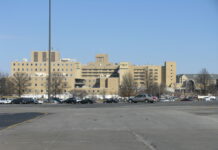Photo credit: DiasporaEngager (www.DiasporaEngager.com).
The percentage of adolescent and adult females as well as male adults receiving prescriptions for stimulants used to treat ADHD symptoms increased during 2016–2021, particularly during the COVID-19 pandemic (2020–2021).
The first step in diagnosing ADHD is to talk with a primary healthcare provider who may diagnose ADHD themselves or may make a referral to a mental health provider. Diagnosing ADHD usually includes a checklist for rating ADHD symptoms and looking at the person’s history of behavior and experiences. The provider will determine if ADHD symptoms were present before age 12 years and may ask for permission to gather information from friends and family. A medical and psychological exam may be needed to rule out other health problems that can cause symptoms like ADHD or that are often present with ADHD, such as anxiety, depression, sleep problems, alcohol or substance misuse, or learning disabilities.
Treatment for ADHD can include medication—most commonly stimulant medication—as well as therapy and other behavioral treatments, or a combination of methods. What works best depends on the person and their family. Effective treatment plans will include close monitoring, follow-ups, and making changes, if needed, along the way.
The American Professional Society for ADHD and Related Disorders (APSARD) is currently working to create US Guidelines for Adults with ADHD.
Source of original article: Centers for Disease Control and Prevention (CDC) / CDC Features Series (tools.cdc.gov).
The content of this article does not necessarily reflect the views or opinion of Global Diaspora News (www.GlobalDiasporaNews.com).
To submit your press release: (https://www.GlobalDiasporaNews.com/pr).
To advertise on Global Diaspora News: (www.GlobalDiasporaNews.com/ads).
Sign up to Global Diaspora News newsletter (https://www.GlobalDiasporaNews.com/newsletter/) to start receiving updates and opportunities directly in your email inbox for free.

































